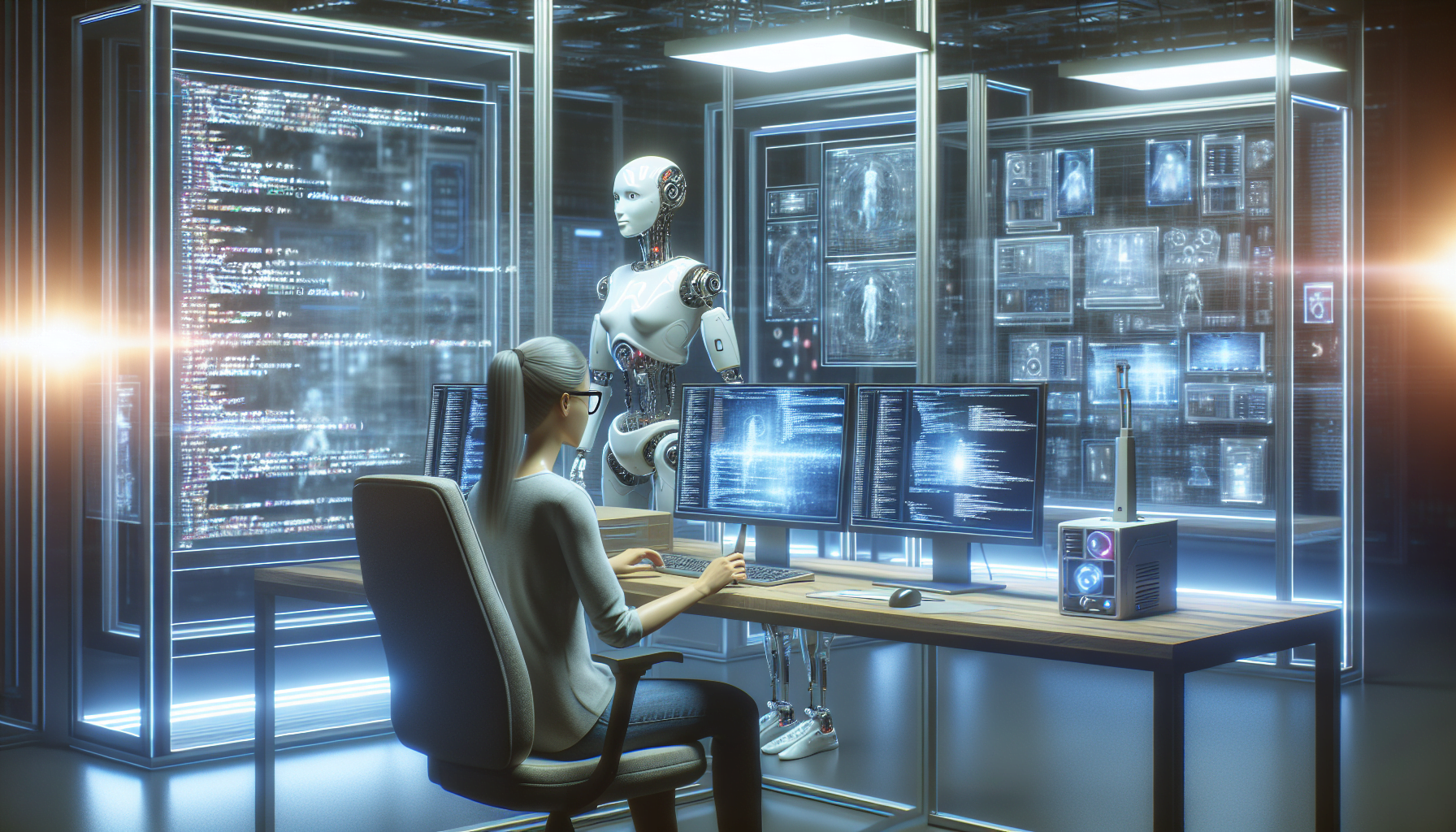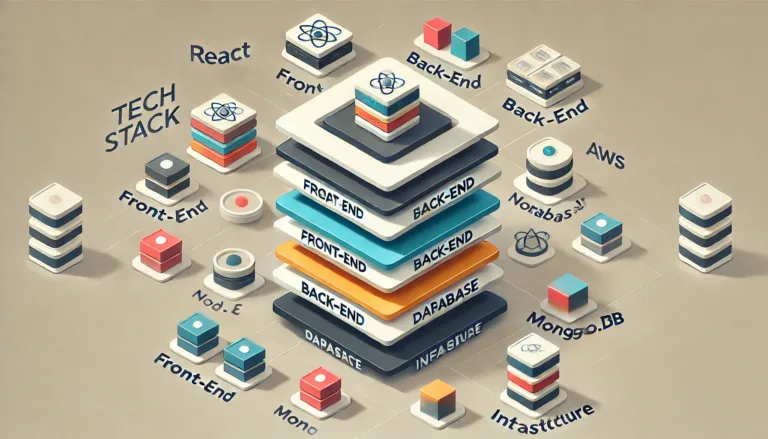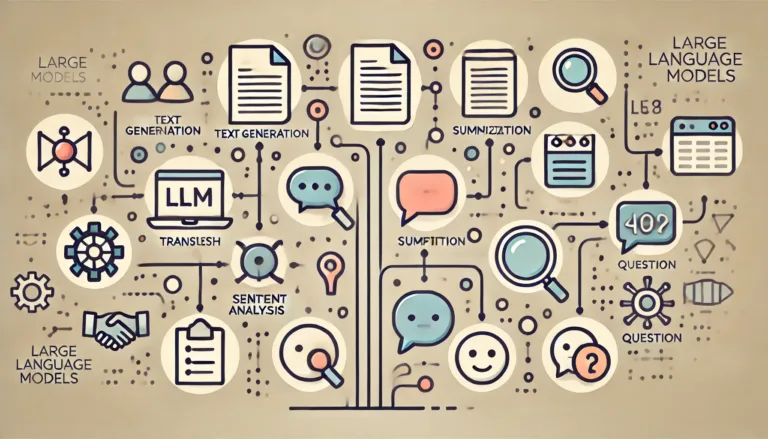Popular Programming Languages for AI
Jumping into AI programming? Buckle up, it’s a wild ride. We’re gonna talk about some star players in this field, mainly Python and Lisp. Each brings something special to the table.
Python and Its Role in AI
Try talking AI without mentioning Python. It’s the go-to language, and here’s why:
- Piece of Cake: Python’s syntax is clean and simple, making it a breeze for newbies and pros alike.
- Loaded with Goodies: Think TensorFlow, Keras, PyTorch. Python’s packed with libraries that make building and deploying AI models easier than pie.
- Buddies Everywhere: With a huge and active community, you’ve got tons of resources, tutorials, and backup at your fingertips.
Check out these popular Python frameworks used in the AI world:
| Framework | What’s It For? |
|---|---|
| TensorFlow | Deep Learning, Machine Learning |
| Keras | High-Level Neural Networks |
| PyTorch | Deep Learning |
| Scikit-Learn | Machine Learning, Data Mining |
Wanna dig deeper into Python and AI? Don’t miss our full piece on AI in Python.
The Cool Factor of Lisp in AI
Lisp isn’t the first thing that pops into your head for AI, but it’s got some timeless charm, famously used in research and academia:
- Master of Symbols: Lisp is fantastic with symbolic info, making it ideal for natural language processing and theorem proving.
- Shape-shifting: Lisp’s macro system allows wild code manipulation, perfect for quick prototyping.
- Tidy Up: Automatic garbage collection takes the load off managing memory, which is super handy for complex AI stuff.
Lisp might be niche, but it’s a beast in certain AI problems needing detailed symbolic computations. Curious about more AI programming languages? Head over to AI coding languages.
In the world of AI, Python and Lisp each shine in their own ways. Python’s user-friendly and resource-rich, while Lisp has unmatched abilities in symbolic processing. Whether you’re tackling machine learning models or unraveling symbolic puzzles, mastering these languages will seriously up your AI game.
Java and AI Development
Java’s got a lot of juice for AI programming. From mobile apps to AI frameworks like TensorFlow, it’s got you covered. Java’s got a ton of libraries for AI and is easy to debug, making it popular among developers. Curious about AI in Java? Check out AI in Java for more info.
| Java Perks | Boosts for AI |
|---|---|
| Works with TensorFlow | Smooth model merging |
| Tons of Libraries | Great for AI projects |
| Simple Debugging | Easier error fixes |
| Graph Data Display | Clear data visuals |
C++ for Heavy-Duty AI
C++ is the beast for resource-hungry AI tasks. It’s super efficient and flexible, ideal for handling complex AI models (BairesDev). Though not every AI engineer’s first love, its high performance and control over system resources are hard to beat.
Main Wins with C++:
- Super Efficient: For big processing tasks.
- Mega Flexible: Lets you control system resources.
- Lightning Fast: Crucial for training and inference.
| C++ Perks | AI Benefits |
|---|---|
| High Efficiency | Best for big tasks |
| Flexibility | Full resource control |
| Speed | Faster model training |
Dipping your toes into C++ might be tough, especially for beginners. But its power for heavy AI tasks makes it worth the hustle. Check out machine learning basics for a solid starting point.
R for Crunching Numbers Like a Pro
R shines bright in AI, especially for serious number crunching. Its built-in functional programming and vector computation skills make it perfect for stats-heavy tasks, crucial for AI (BairesDev). And with AI-specific packages, crafting and deploying models in R is a breeze.
R’s Key Moves:
- Stat Analysis: Rockstar in data analysis.
- Functional Programming: Makes tough math easy.
- AI Packages: Special tools for AI magic.
| R Features | AI Wins |
|---|---|
| Stat Analysis | Data analysis pro |
| Functional Programming | Eases calculations |
| AI Packages | AI-specific tools |
R empowers developers with mighty libraries and datasets to build killer AI solutions. Want more on AI with R? See our guide to ai coding languages.
Wrapping it Up
Whether it’s Java, C++, or R, each has its unique flair for AI. Java offers seamless integration; C++ provides high performance and resource management; R is a data-crunching master. For those looking to level up, explore ai certification programs to validate and grow your skills.
Check Out AI Programming: Prolog in the Spotlight
What’s the Deal with Prolog?
When we’re talking AI programming, Prolog is a name that keeps popping up. Alain Colmerauer put his brain to work in 1973, with some help from Robert Kowalski, and voilà—Prolog was born! Unlike regular programming, Prolog runs on logic. I get to tell the computer what needs to happen, and it figures out the ‘how’. It’s like my personal detective for AI tasks, especially handy for stuff like natural language processing, or cooking up some smart AI algorithms.
Logic Programming: Going Places
Logic programming has taken some wild turns since Prolog first appeared. Fancy versions, called fifth-generation languages, have been cooked up by smart folks at the Institute for New Generation Computer Technology in Tokyo. These guys went a step further, focusing on nonnumerical parallel computers which fancy AI folks love (Britannica).
This ain’t your grandpa’s logic programming. Next-gen logic tools are turning heads in AI, flexing their muscles in tough areas where older tools stumbled. They’ve ramped things up from basic logic tricks to heavyweight parallel processing, making logic programming crucial for modern AI.
| Feature | Prolog | Fifth-Generation Languages |
|---|---|---|
| Year Created | 1973 | 1980s |
| Developed By | Alain Colmerauer, Robert Kowalski | Institute for New Generation Computer Technology, Tokyo |
| Main Idea | Logic-based theorem proving | Parallel processing for complex AI tasks |
The rise of generative AI like Copilot and ChatGPT is shaking things up even more (IBM; Carnegie Mellon University). These tools write code based on what you describe, making your life a whole lot easier. They mix old-school logic inference with today’s AI perks, letting you deliver AI solutions faster and smarter.
Want to geek out more on AI programming languages? Check out AI coding languages and see what they can do in AI software development. Stick with it, keep playing around, and Prolog might just become your go-to buddy in the AI playground.
Machine Learning for AI
Machine learning is the backbone of artificial intelligence, letting computers turn data into decisions without needing to be told what to do each step of the way. We’ll chat a bit more about the gear and gizmos that make it all happen—and why it matters across different industries.
AI Gear and Gizmos
Behind every smart AI is some serious hardware and software. Popular programming languages among AI developers are Python, R, Java, C++, and Julia (TechTarget). Each one shines in its own way, depending on what you’re trying to cook up.
Top AI Programming Languages
| Language | Why It Rocks |
|---|---|
| Python | Tons of libraries (think TensorFlow, Keras) |
| R | Great for crunching numbers |
| Java | Scalable and portable |
| C++ | Handles heavy-duty jobs well |
| Julia | Speed and elegance for top-notch computing |
To crunch all that data, powerful GPUs are your best friend. And with tools like TensorFlow and PyTorch, building and training machine learning models is a breeze. Curious about the nuts and bolts of AI software? Check out our article on AI software development.
AI Shaking Up Industries
Machine learning is making waves in all kinds of fields. Here’s how it’s changing the game:
Healthcare
AI is a game-changer in healthcare (NCBI). From improving patient care to making admin work less of a headache, AI algorithms help with precision medicine, predicting treatment success, and personalizing care. Neural networks and deep learning are also raising the bar for diagnostics.
Finance
In the finance world, AI systems sift through mountains of data to forecast trends, manage risks, and sniff out fraud. Algorithms make split-second trading decisions, optimize portfolios, and offer personalized financial advice.
Retail
Retailers are cashing in on AI by predicting what customers want, automating inventory, and spicing up customer service with chatbots. Machine learning models dig through buying habits to recommend products, boosting sales and keeping customers happy.
Automotive
In cars, AI’s at the wheel, quite literally. It’s making strides with self-driving tech, enhancing safety by processing real-time data and making decisions on the fly. Machine learning algorithms help with autonomous driving, avoiding bumps, and managing traffic.
| Industry | AI Magic |
|---|---|
| Healthcare | Precision medicine, diagnostics |
| Finance | Market forecasting, fraud busting |
| Retail | Behavioral analytics, chatbots |
| Automotive | Self-driving tech, traffic control |
AI’s reach is massive, spanning countless fields and constantly evolving as machine learning paves the way for new possibilities. For a closer look at AI coding check out our pages on AI coding languages and machine learning basics.
So there you have it, a peek under the hood of machine learning and how it’s changing the world one algorithm at a time.
The Buzz Around Generative AI
Generative AI has flipped the script in artificial intelligence programming, shaking up how we think about code and ethics.
Cool AI Code Generation
Generative AI tools have been game-changers for software development. They use predictive algorithms to whip up original code snippets or even whole functions based on simple text prompts. Think of this like having a highly skilled coder on autopilot, handling the stuff you’d rather skip and speeding up your workflow.
Take IBM Watson Code Assistant, for instance. It suggests code based on what you’re typing or even from existing source code. This doesn’t just pump up developer productivity; it helps you stay focused on the big stuff by cutting down on mental multitasking.
| Tool | Features |
|---|---|
| IBM Watson Code Assistant | AI-suggested code, natural language inputs, boosts productivity |
| GPT-3 | Huge language model, creates code from text prompts |
| GitHub Copilot | Recommends code snippets, handles routine coding |
Generative AI also breathes new life into old code and translates it between different programming languages. That’s a big win if you’re juggling multiple AI coding languages. These tools keep your workflow smooth, catch coding errors, and flag security risks—making them must-haves in any coder’s toolkit.
The Ethics Angle in AI
Generative AI sounds like magic, but it’s got its shades of grey. When these systems create stuff—code, poems, or scripts—they’re just predicting the next word or token in a sequence. It’s a clever trick, but not real creativity. So, there are big questions about originality and who really owns the generated output.
Plus, these AI models can be biased. They learn from huge datasets, and if there’s bias in the data, it shows up in their output. This is why keeping an eye on the ethical side of AI is crucial.
Developers and companies need to use AI wisely, balancing the perks with the ethical pitfalls. Smart use of AI can bring big benefits while dodging some major downsides.
If you want to dive deeper into this ethics stuff, check out these reads: AI ethical dilemmas and societal impact of AI. They shed light on the hurdles and duties that come with wielding artificial intelligence.
The Future of AI and Society
Artificial Intelligence (AI) is shaking up everything around us, from our daily routines to the way society functions as a whole. Let’s talk about its impact and some of its ethical headaches.
How AI is Changing Society
AI isn’t just a fancy buzzword—it’s altering life as we know it, though not without some bumps along the way:
- Losing Jobs to Robots: People worry that AI will steal jobs, thanks to automation. Though it might actually create new jobs, we need action plans like retraining programs to help folks who get the short end of the stick.
Sector Job Risk Manufacturing High Health Care Moderate Retail High Education Low - Unfair Bias and Prejudice: AI can gobble up historical data and spit out the same old biases, especially in hiring, loans, and justice. The goal is to build fair algorithms and ensure companies are held responsible for unfair AI (Capitol Technology University).
Check out more on AI’s influence in our pieces on AI in Python and AI in Java.
AI’s Ethical Headaches
AI isn’t all roses; it brings some tricky ethical questions:
- Who’s Responsible?: Many AI systems are like mystery boxes—you can’t easily figure out how they make decisions. That’s a problem in sectors like healthcare and self-driving cars. Explainable AI is being worked on to make these decisions clearer (Capitol Technology University).
- Who Owns What?: Things get murky with AI-created art and content. Who holds the rights? Laws are still playing catch-up, and lawmakers are scrambling to set the rules straight (Capitol Technology University).
- Fake News: AI can spread false info and mess with public opinion, fanning social flames. Deepfakes, in particular, are risky, especially for elections. We need strong measures to deal with these threats (Capitol Technology University).
Delve deeper into AI’s advances and its ethical twists in our articles on AI code generation advancements and AI ethical dilemmas.
AI is flipping society on its head, and it’s crucial for developers to stay sharp about its impacts and ethical issues. By staying up-to-date and following ethical practices, we can use AI responsibly and for the greater good.









